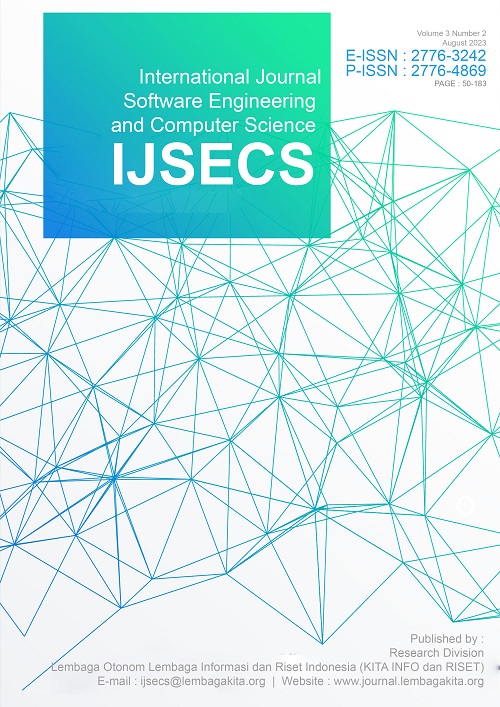Published: 2023-08-28
The Role of E-Commerce in Increasing Sales Using Unified Modeling Language
DOI: 10.35870/ijsecs.v3i2.1503
Djarot Hindarto
Abstract
The advent of contemporary technology advancements and the proliferation of the internet have presented firms and retail establishments with significant prospects for augmenting their sales outreach via electronic commerce. E-commerce enables stores to engage in the sale of their products across Indonesia and international markets without being constrained by limitations of physical location or temporal constraints. E-commerce has the potential to offer consumers a more convenient, expedited, and efficient shopping experience. Consumers can conveniently look for and make choices on the things they intend to purchase, expediting and enhancing the efficiency of the transactional process. Furthermore, e-commerce can offer consumer satisfaction through many means, such as efficient delivery services, flexible return and refund policies, product exchanges, and responsive and amiable customer support. In contrast, e-commerce can enhance cost-effectiveness and improve operational efficiency within the sales process. E-commerce enables businesses to mitigate operating expenses, including expenditures related to physical store rentals, marketing initiatives, and inventory management. Furthermore, implementing e-commerce can facilitate inventory management and sales tracking for retail establishments. Hence, the significance of e-commerce in promoting the augmentation of store sales is noteworthy. Despite the significant profitability of e-commerce, retailers encounter other obstacles, including intensifying rivalry and the looming risk of cybercrime. Hence, retailers must develop a robust e-commerce strategy to compete effectively in the market and ensure secure and dependable services to their customers. This study uses the Unified Modeling Language, a precious tool for the design and modeling of software to be developed.
Keywords
Customer Support ; E-Commerce ; Modeling of Software ; Purchase ; Unified Modeling Language





